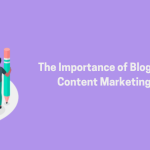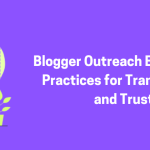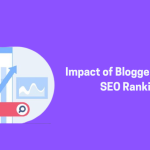Table Of Content
- 1 What Is Technical SEO?
- 2 A Comprehensive Technical SEO Checklist For SaaS Companies
- 2.0.1 (i) Technical SEO Audit
- 2.0.2 (ii) Analysis Of Competitors
- 2.0.3 (iii) Image Enhancement
- 2.0.4 (iv) Page Speed Enhancement
- 2.0.5 (v) Analysis Of Metadata
- 2.0.6 (vi) Site Plans And Crawl Spending
- 2.0.7 (vii) Architecture And Structural Analysis Of Websites
- 2.0.8 (viii) The Markup For Structured Data
- 2.0.9 (ix) Markup For Schemas
- 2.0.10 (x) Analysis Of Backlinks
- 2.0.11 (xi) Keyword Research
- 2.0.12 (xii) Prevention Of Penalties
- 3 Key Takeaways
Even though search engine optimization (SEO) is always changing, many SaaS (software as a service) businesses still rely on it to send leads into their funnels and generate website traffic.
While many SaaS organizations don’t invest the time or money required to accomplish technical SEO correctly, it is the cornerstone of organic search results success.
In this blog post, we have outlined the nitty-gritty of SaaS Technical SEO and how you can improve it to give yourself a competitive edge and boost your ranking.
What Is Technical SEO?

A website must comply with search engines’ technical standards and criteria to obtain organic ranks and traffic. This is known as technical SEO.
Consider this: If Google is the manager and websites are the employees, then a website that has been appropriately optimized by adhering to technical SEO best practices will be the teacher’s pet and get preference on search result pages (SERPs).
The three main functions of search engines—crawling, rendering, and indexing—are the foundation of technical SEO.
Crawling: Search engines index your web pages using bots. You can control what and how your website gets crawled by using a robots.txt file.
Rendering: Rendering is the process by which a browser renders the code used on your sites and presents it to the visitor in an easy-to-view and understandable manner. The code on any webpage you visit makes it look and work the way it does.
Indexing: Once a page has been rendered and crawled, it is indexed, and its contents are saved for later use. Since this has a greater impact on how well your sites rank in search results, managing what is indexed is typically more important than monitoring what is crawled.
What Makes Technical SEO Techniques Important?
You need a well-optimized website that search engines can index for your web pages to appear in search results. Even with the greatest product and content, potential buyers won’t be able to reach your website naturally if your technical SEO is subpar.
A Comprehensive Technical SEO Checklist For SaaS Companies

Here’s a checklist of technical SEO best practices:
(i) Technical SEO Audit
Technical SEO problems are frequently undetectable. An audit uses a fine-tooth comb to scan over your website and find flaws such as crawl problems and broken pages. Several of these concerns may prevent you from succeeding with SEO, even though they might seem like a small inconvenience.
(ii) Analysis Of Competitors
Are your rivals doing better in searches than you? Perhaps there aren’t fewer technical SEO roadblocks in their path. Create a plan to put you ahead of the competition by learning exactly what they’re doing and how it works.
(iii) Image Enhancement
High-performing content requires visual material. However, if done poorly, it may cause more trouble than benefit. To ensure your photos contribute value to your website and your SaaS SEO strategy, optimize image alt attributes, resize files, and use sitemaps and plugins.
(iv) Page Speed Enhancement
When it comes to technical SEO, a slow-loading page is fatal. To guarantee that your visitors have a great experience and that your website ranks higher, compress data, optimize the code, and remove redirects.
(v) Analysis Of Metadata
Meta tags explain the topic of your content to users and search engines. Using the appropriate information, which includes alt attribution, robot tags, title tags, and more, can increase your exposure and traffic.
(vi) Site Plans And Crawl Spending
Because of crawl problems, you get less material indexed than you want out there in the world. Consequently, it cannot be located. To improve your SaaS SEO performance, use sitemaps to ensure that your critical pages are consistently scanned, indexed, and ranked correctly.
(vii) Architecture And Structural Analysis Of Websites
The organization of your website is just as crucial as its content. Examine its architecture and make any necessary reorganizations to guarantee improved organic search rankings. You want a simple structure to understand and traverse, with pages nested within each other.
(viii) The Markup For Structured Data
Structured data makes it easier for search engines to comprehend the information you present. This may improve your website’s crawling and indexing, leading to greater outcomes for your SaaS business.
(ix) Markup For Schemas
A specific vocabulary used in structured data is called schema markup. It explains the material on your website to ensure search engines understand it and assign it the right rating. Although it is a foreign language, it is rather effective.
(x) Analysis Of Backlinks
Backlinks are essential to your SEO performance since they increase your website’s authority. Examine your backlink profile in detail to learn more about referring domains and ensure that the websites that link to your site are reliable and of good quality.
(xi) Keyword Research
Keywords form the foundation of on-page SEO and impact overall performance. Make sure your priority and long-tail keywords align with search intent and that you employ the correct keywords in the proper locations.
(xii) Prevention Of Penalties
Google algorithms can seriously disrupt even the most well-laid plans. You don’t have to expose your website to penalties, though, as they might cost you organic visitors and lower your SERP position. To ensure you don’t receive an unexpected penalty, constantly employ white hat SEO techniques and watch for any problems.
Key Takeaways
Even with the constant changes in SEO, technical SEO is still essential for SaaS companies to get organic traffic. Establishing that search engines can easily navigate, index, and understand your website is the first step toward success with organic search.
This entails addressing elements like image optimization, mobile friendliness, sitemap, meta description strategy, and crawling, rendering, and indexing. In the end, a well-optimized website with a solid technical SEO foundation increases search ranks, draws in quality leads, improves user experience, and establishes your company as a leader in the field.
Read Also:









